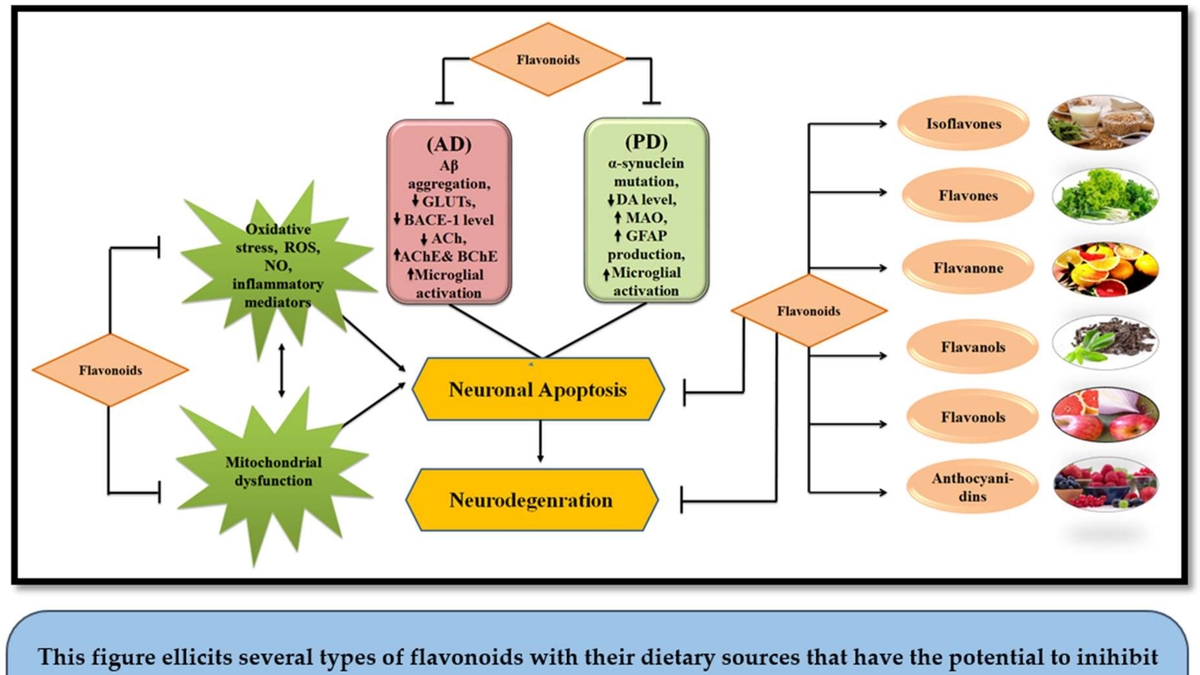
The world of health and nutrition is ever-evolving, with scientific studies constantly challenging our understanding and beliefs. A recent example of this lies in the purported connection between flavonoids and Parkinson’s disease. For years, we have been told that a high intake of flavonoids, compounds found in various fruits and vegetables, could potentially lower the risk of developing Parkinson’s disease. However, new data suggests that this might not be the case.
Challenging the Flavonoid Hypothesis
According to a study published in the Journal of Neurology, Neurosurgery, and Psychiatry, there is no significant association between higher flavonoid intake and a reduced risk of Parkinson’s disease. This research contradicts previous studies that suggested a protective effect of flavonoids against Parkinson’s disease. The findings held even after adjusting for age at the time of diagnosis, and were consistent across participants’ self-reported flavonoid intake and indirect measures of pesticide exposure.
Unraveling the Complexity of Nutritional Epidemiology
The discrepancy between these findings and earlier reports underscores the complexity of nutritional epidemiology. As per a study led by Helena Sandoval-Insausti of Harvard University, the contrasting results reveal the need for further research in this field. Notably, a separate study investigating the fluctuation in flavonoids content in ancient tree sun-dried green tea under different environmental stress conditions found that certain factors could accurately predict the flavonoids content. This suggests that the effects of flavonoids on health might be influenced by a host of environmental and genetic factors.
The Quest for Neuroprotection Against Parkinson’s Disease
These findings have significant implications for our understanding of Parkinson’s disease pathogenesis and prevention. As the protective effect of flavonoids against Parkinson’s disease is called into question, it highlights the need for a comprehensive approach that considers genetic, environmental, and lifestyle factors. The scientific community now faces the challenge of exploring new avenues in the quest for neuroprotection against Parkinson’s disease.
Exploring Other Potential Neuroprotective Compounds
While the effectiveness of flavonoids in preventing Parkinson’s disease is under scrutiny, other compounds are being investigated for their potential neuroprotective effects. For instance, a furanoflavonoid known as karanjin is being studied for its potential in treating neurodegenerative diseases such as Parkinson’s disease. The compound is believed to modulate neurodegenerative diseases through various molecular targets, highlighting the potential of flavonoids in neuroprotection.
The Potential of Dietary Phytochemicals
In addition to furanoflavonoids, dietary phytochemicals like α viniferin are also being explored for their potential benefits. A study found that α viniferin could inhibit Monoamine oxidase (MAO) and alleviate Parkinson’s disease-associated behavioral deficits in a mice model. The compound was well tolerated in both in vitro and in vivo systems, with no alteration in cell viability, mitochondrial morphology, or reactive oxygen species (ROS) generation. This points to the potential of α viniferin as a potential adjunct phytotherapeutic agent for mitigating Parkinson’s disease-related behavioral deterioration.
In conclusion, while the role of flavonoids in preventing Parkinson’s disease is being reevaluated, it opens up new avenues for exploration in neuroprotection. The complexity of nutritional epidemiology and the interplay of genetic, environmental, and lifestyle factors necessitate a comprehensive approach. As research continues in this field, it is hoped that we will uncover more effective strategies for preventing and managing Parkinson’s disease.
